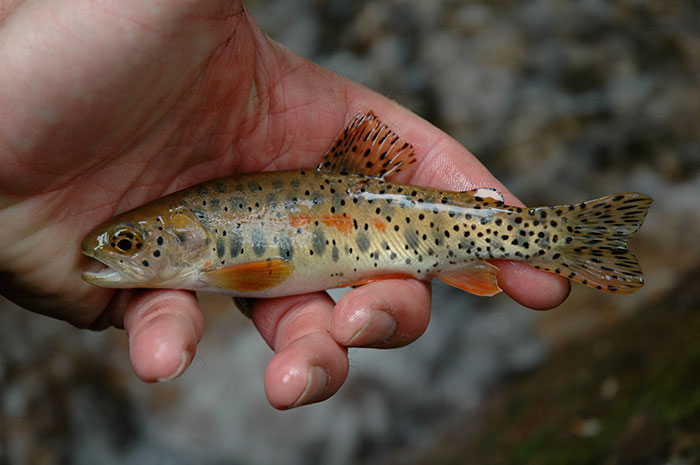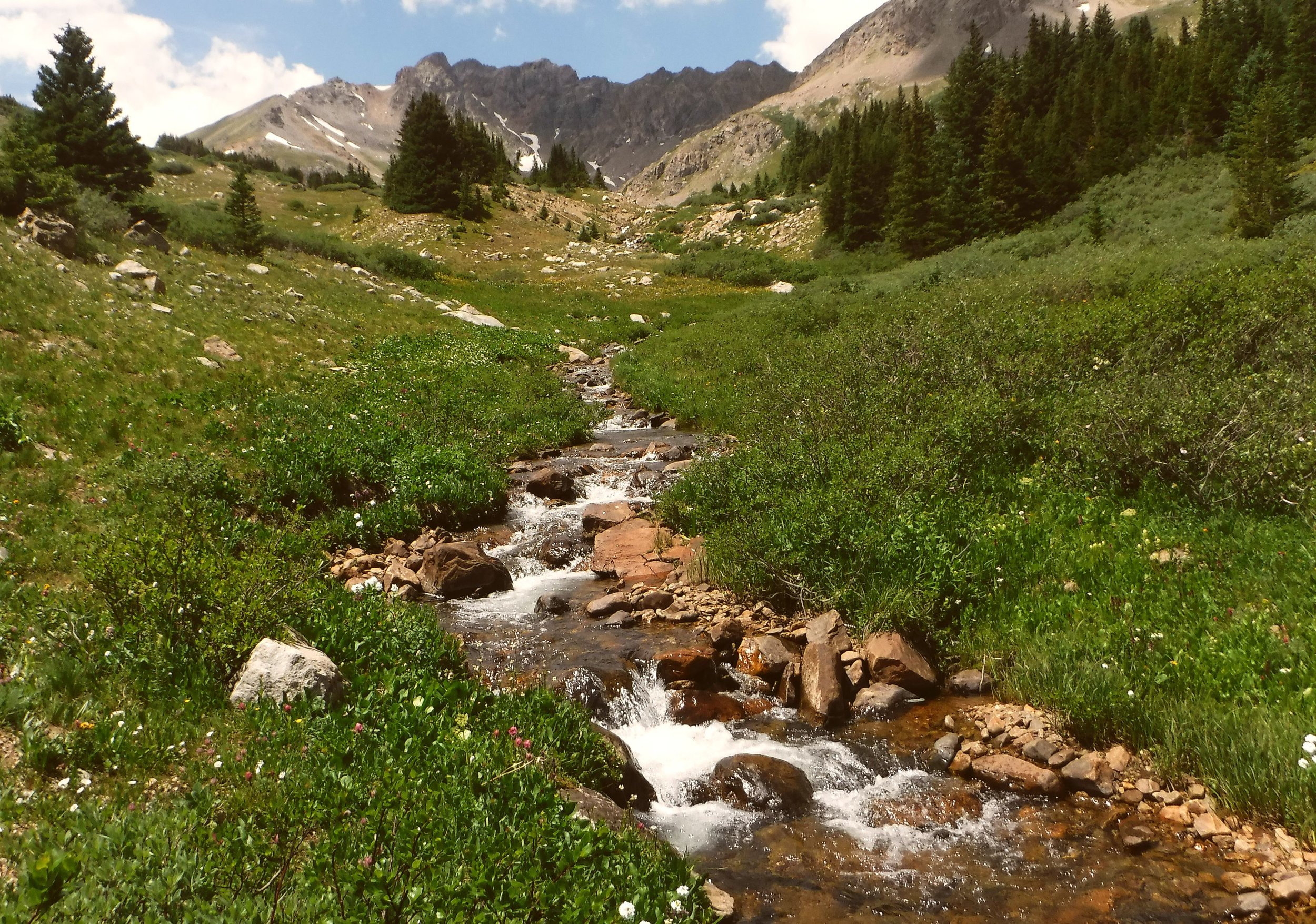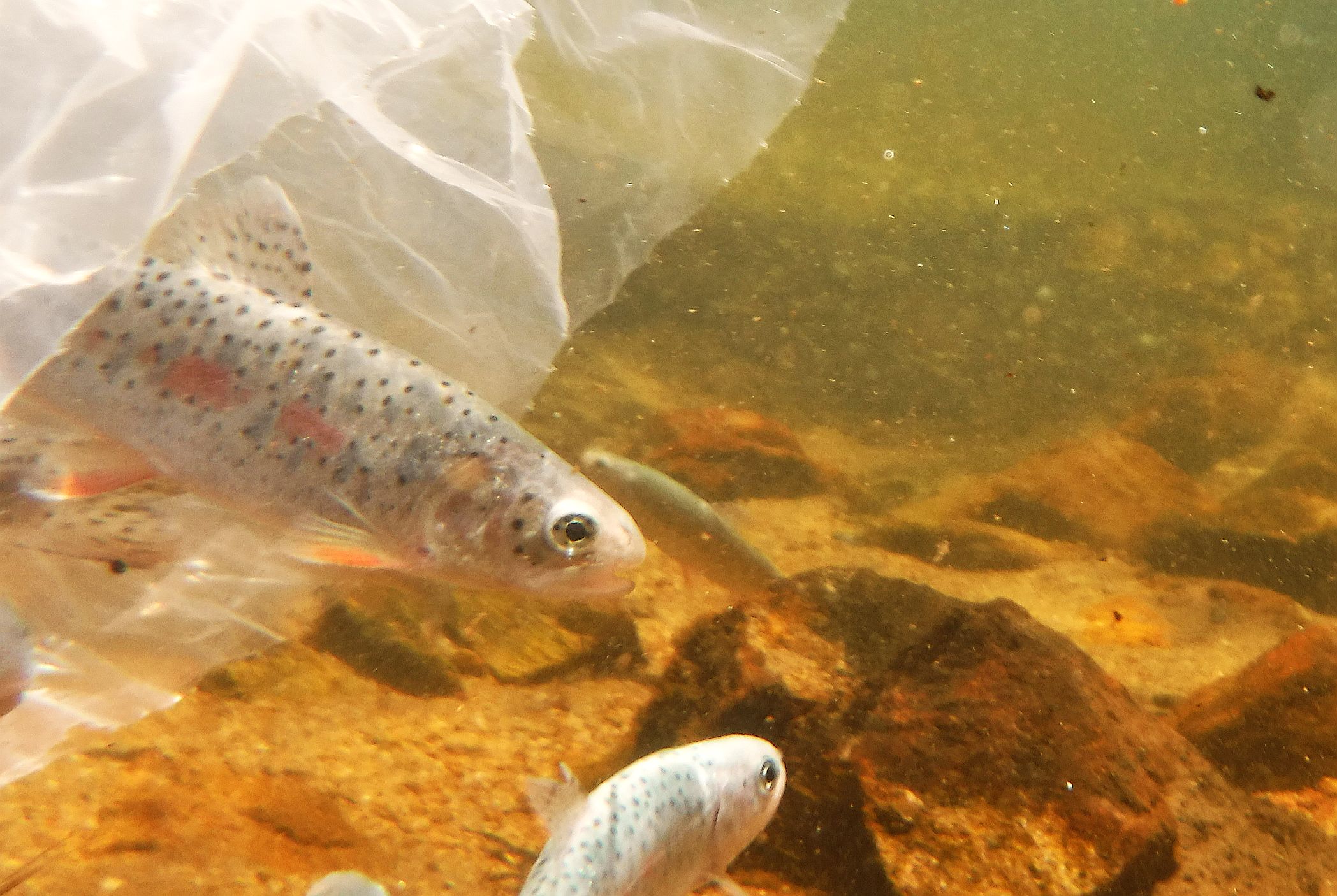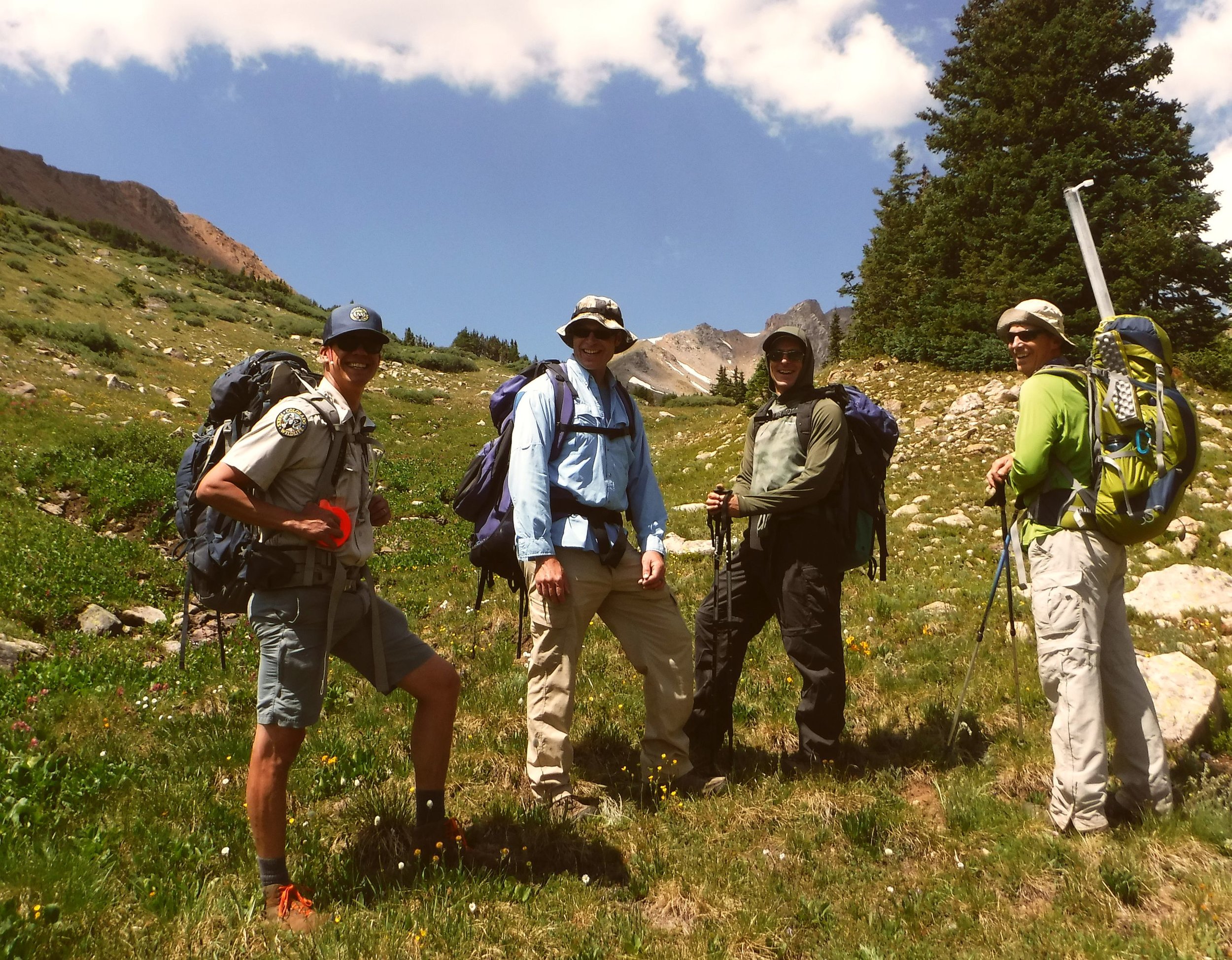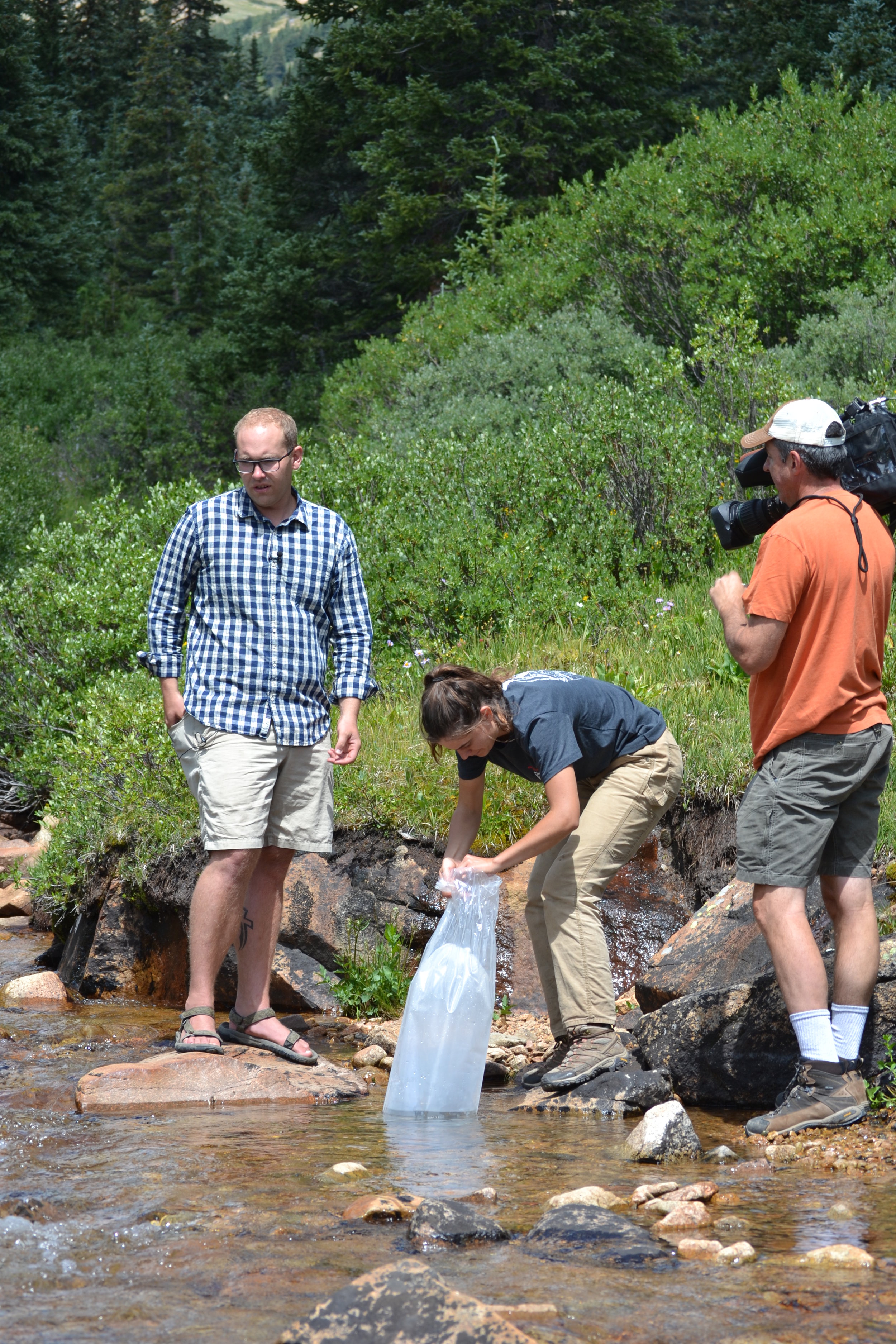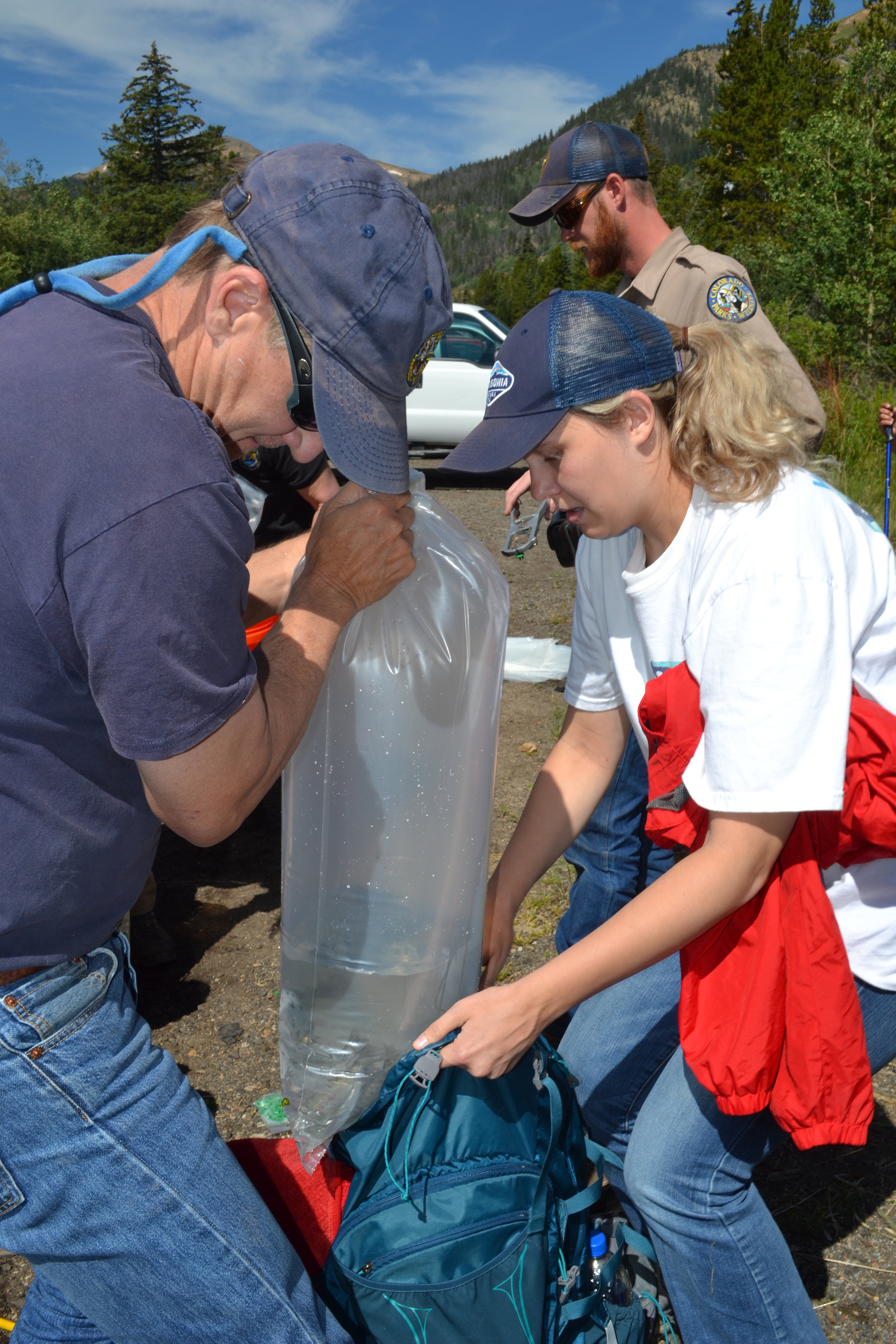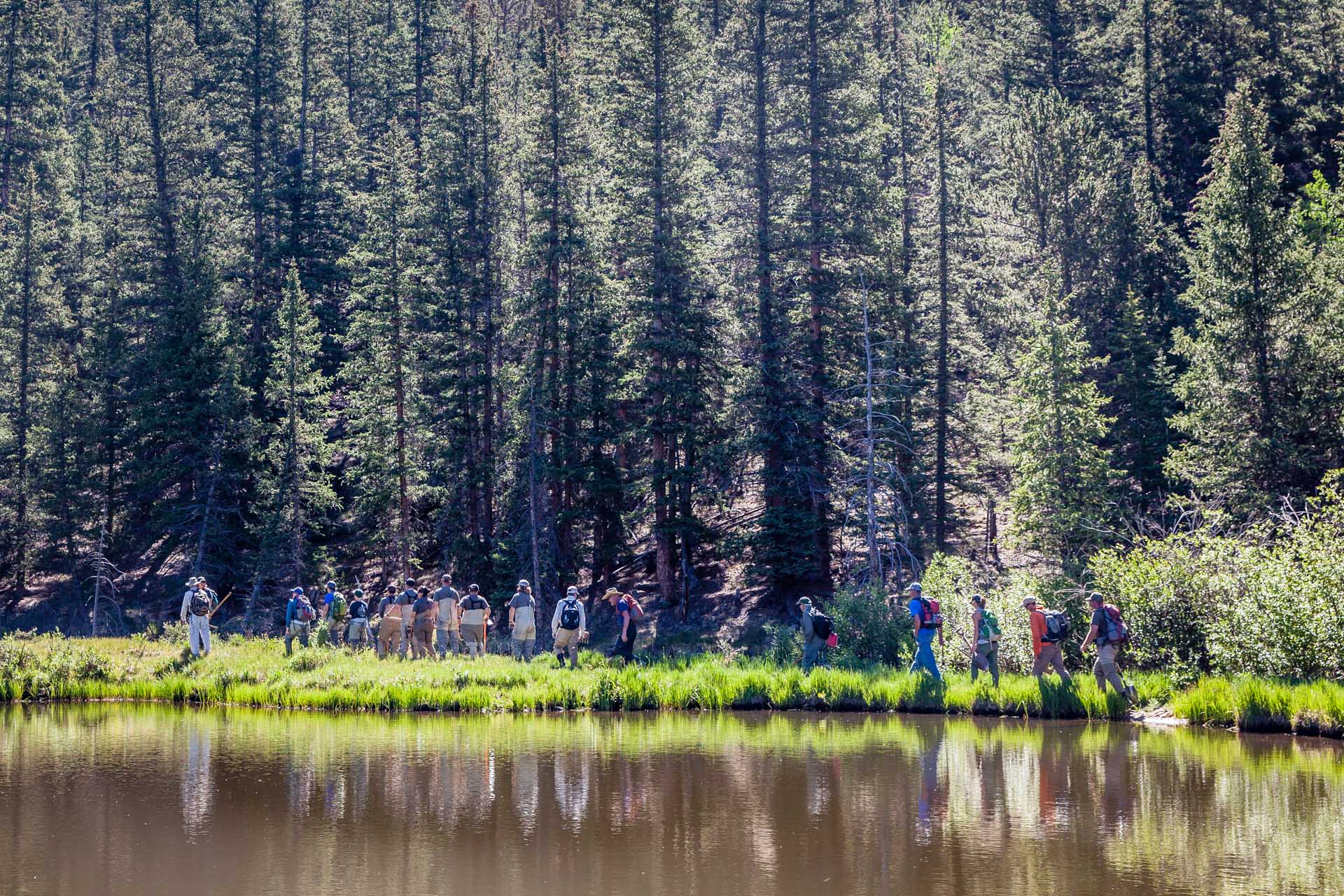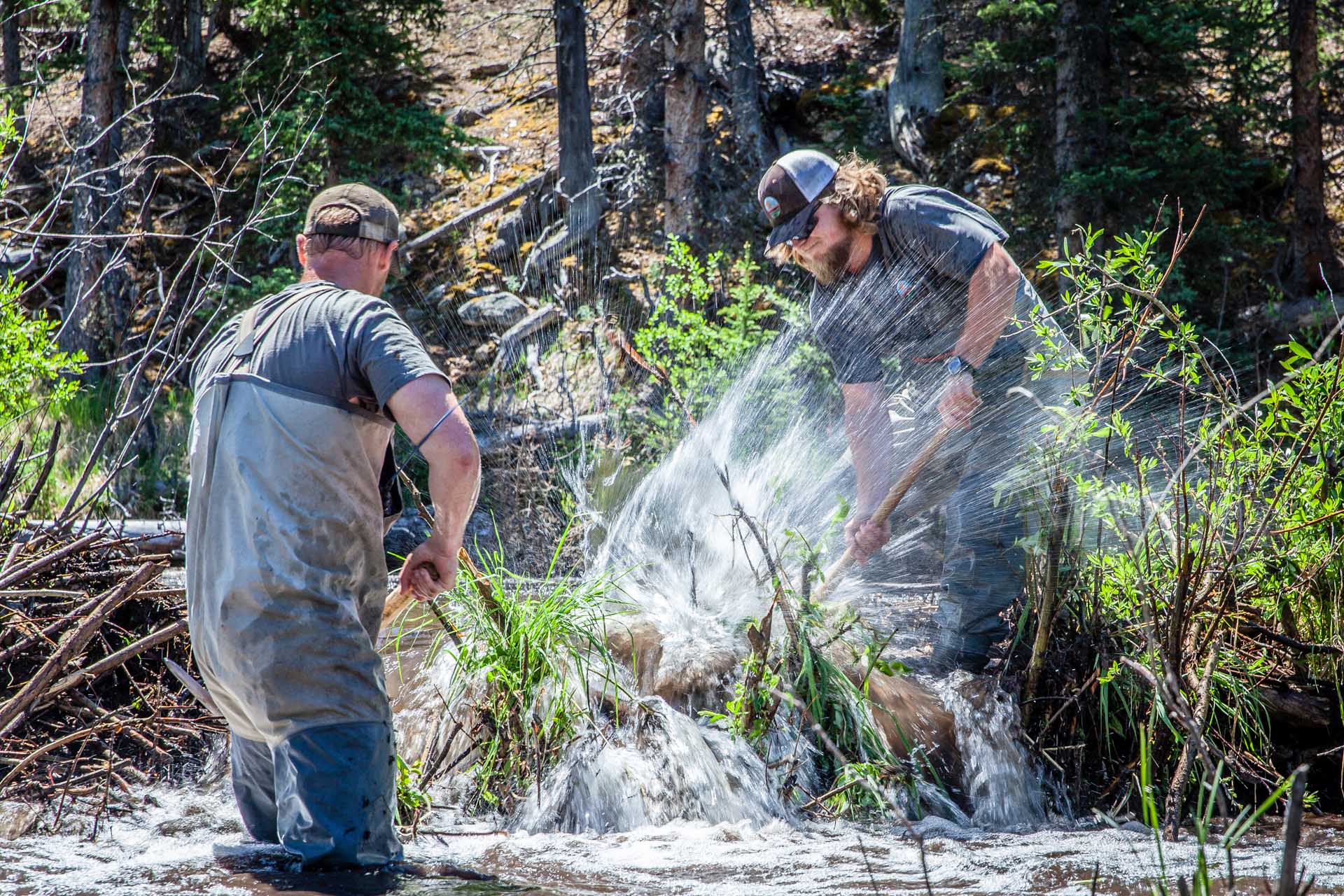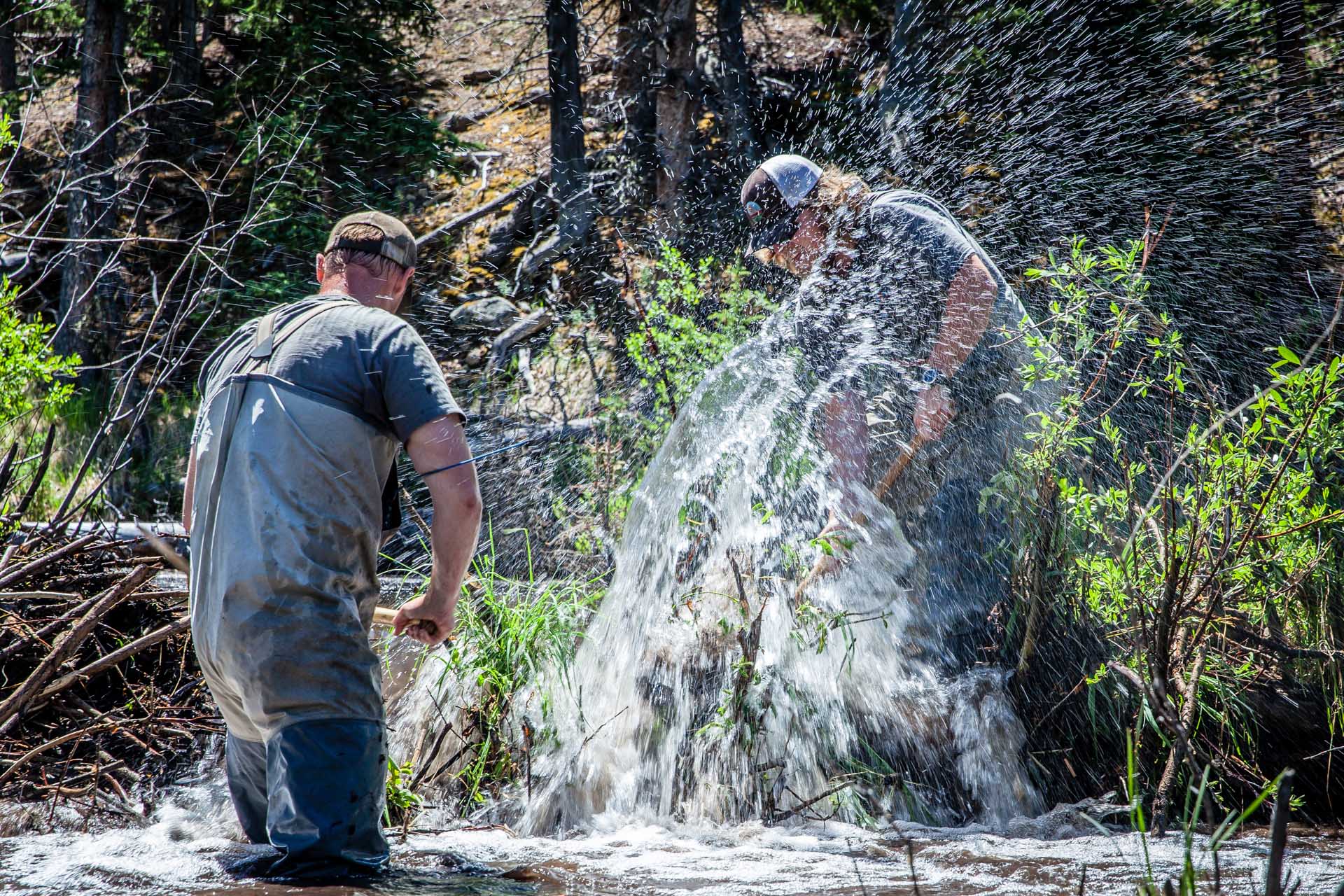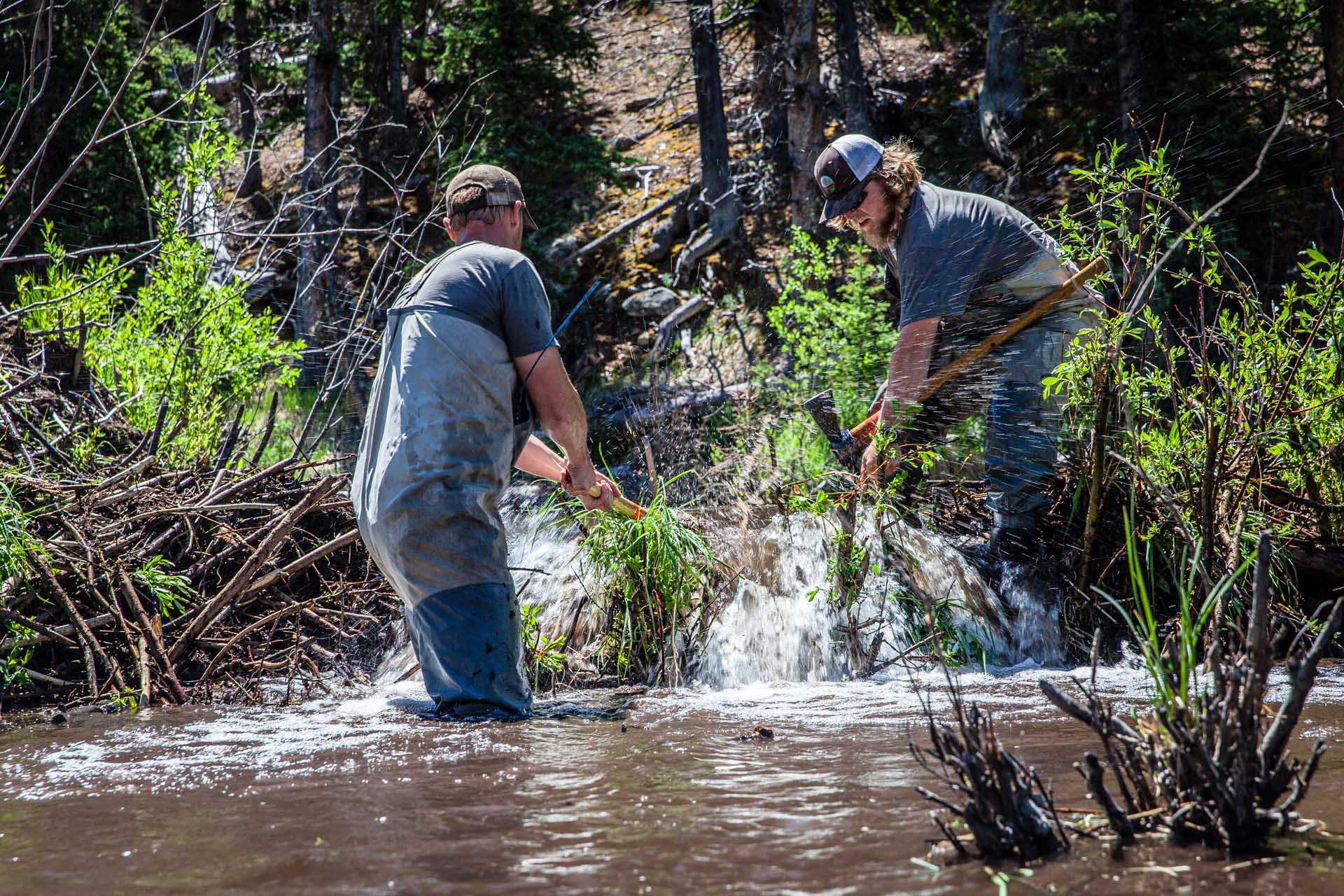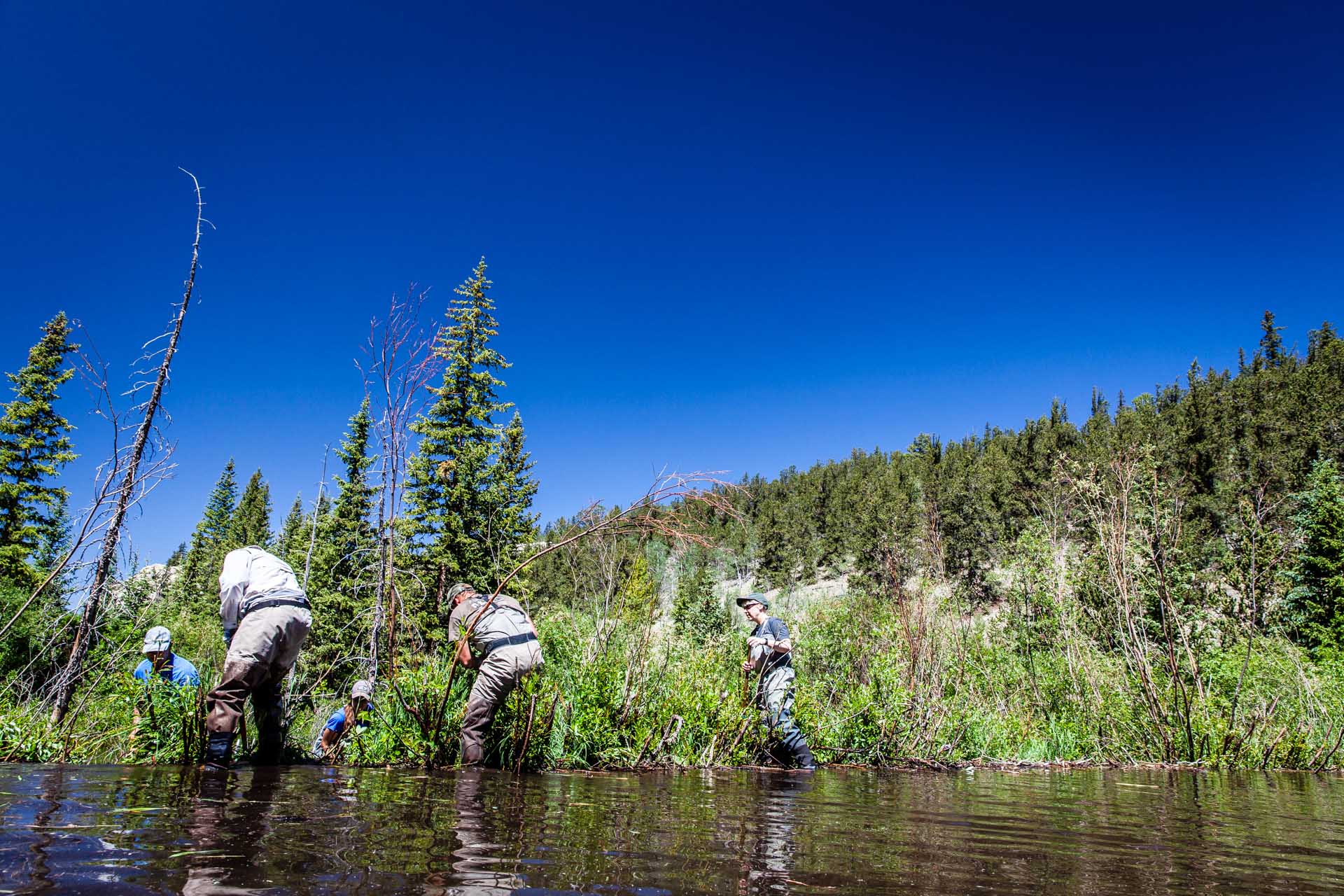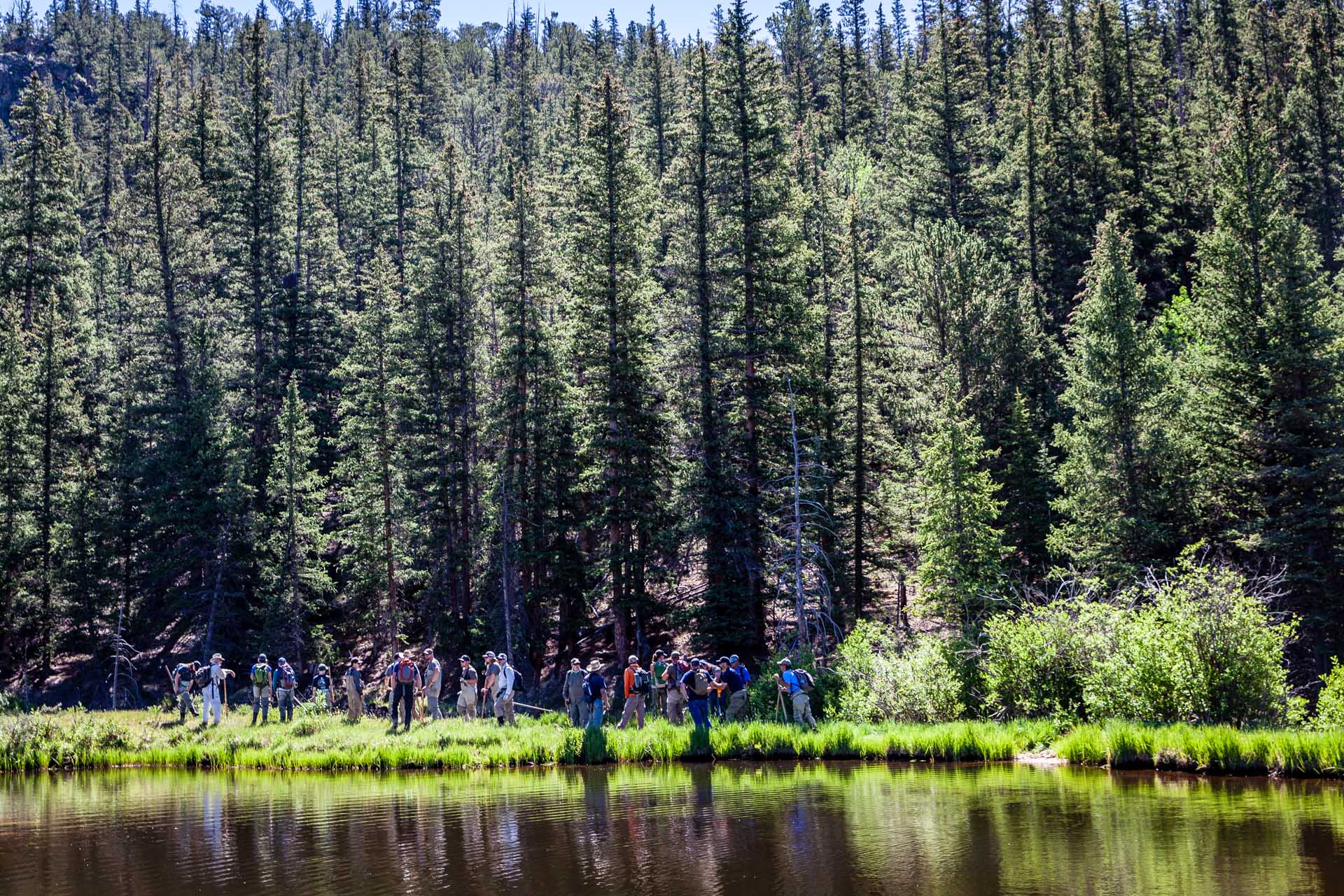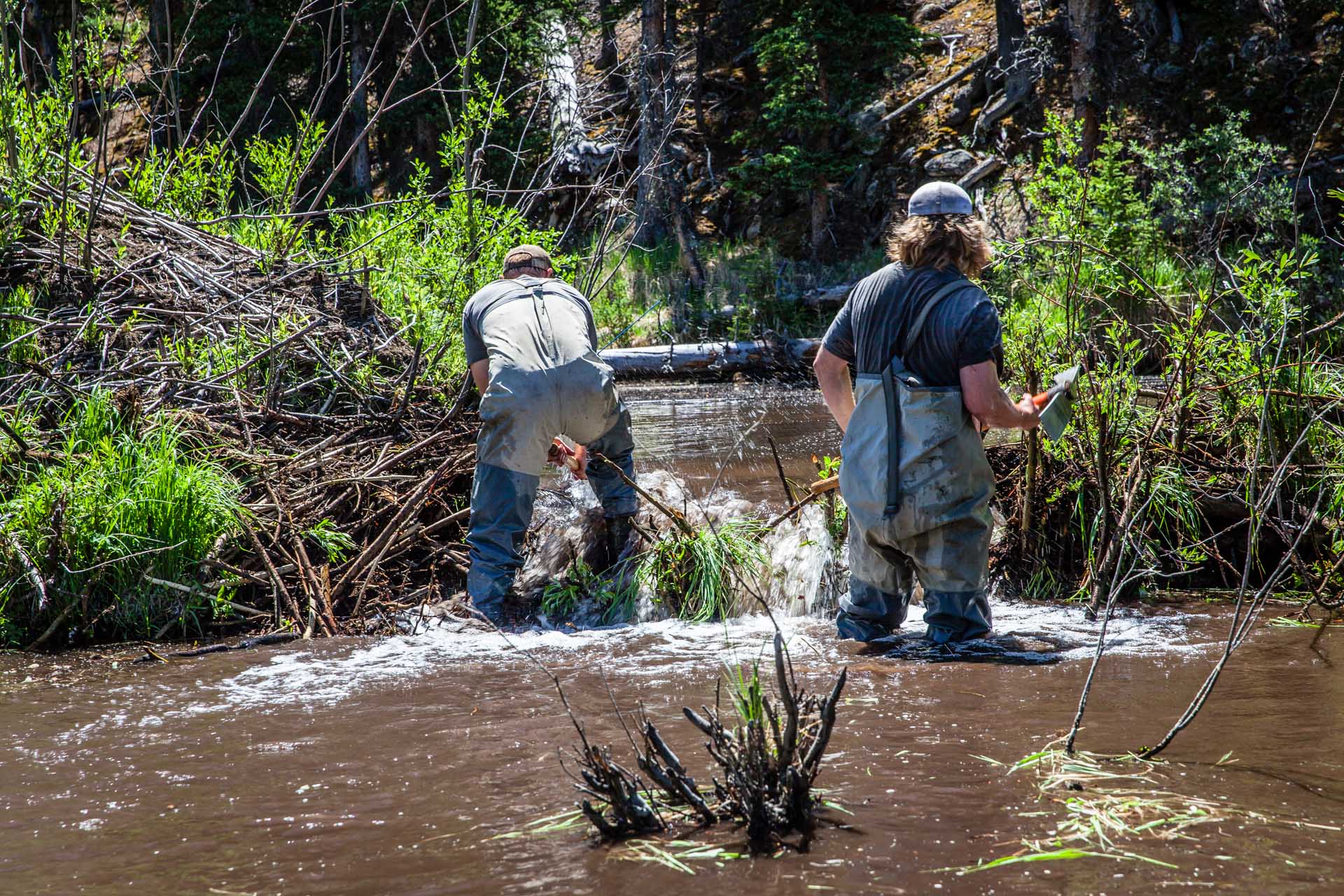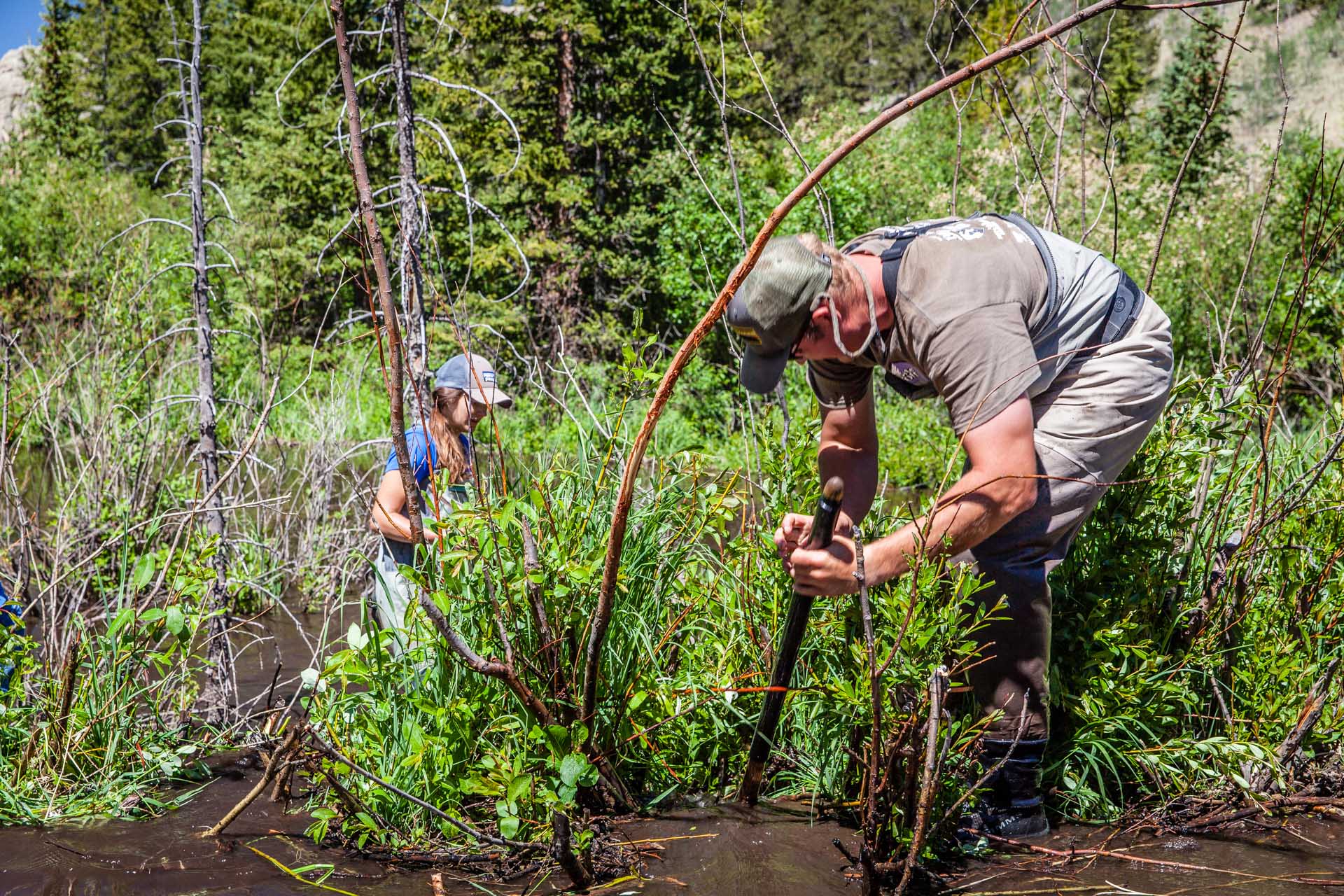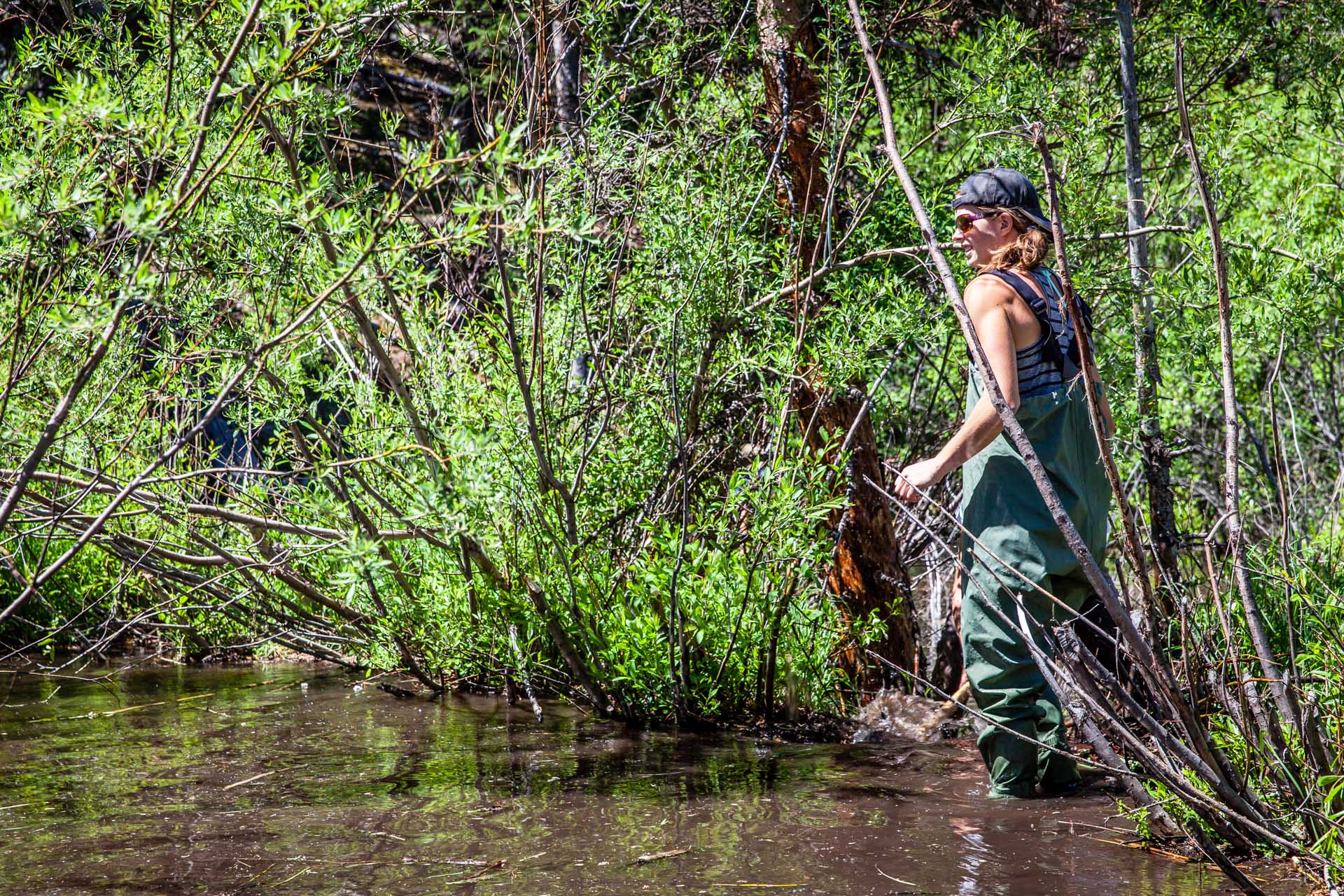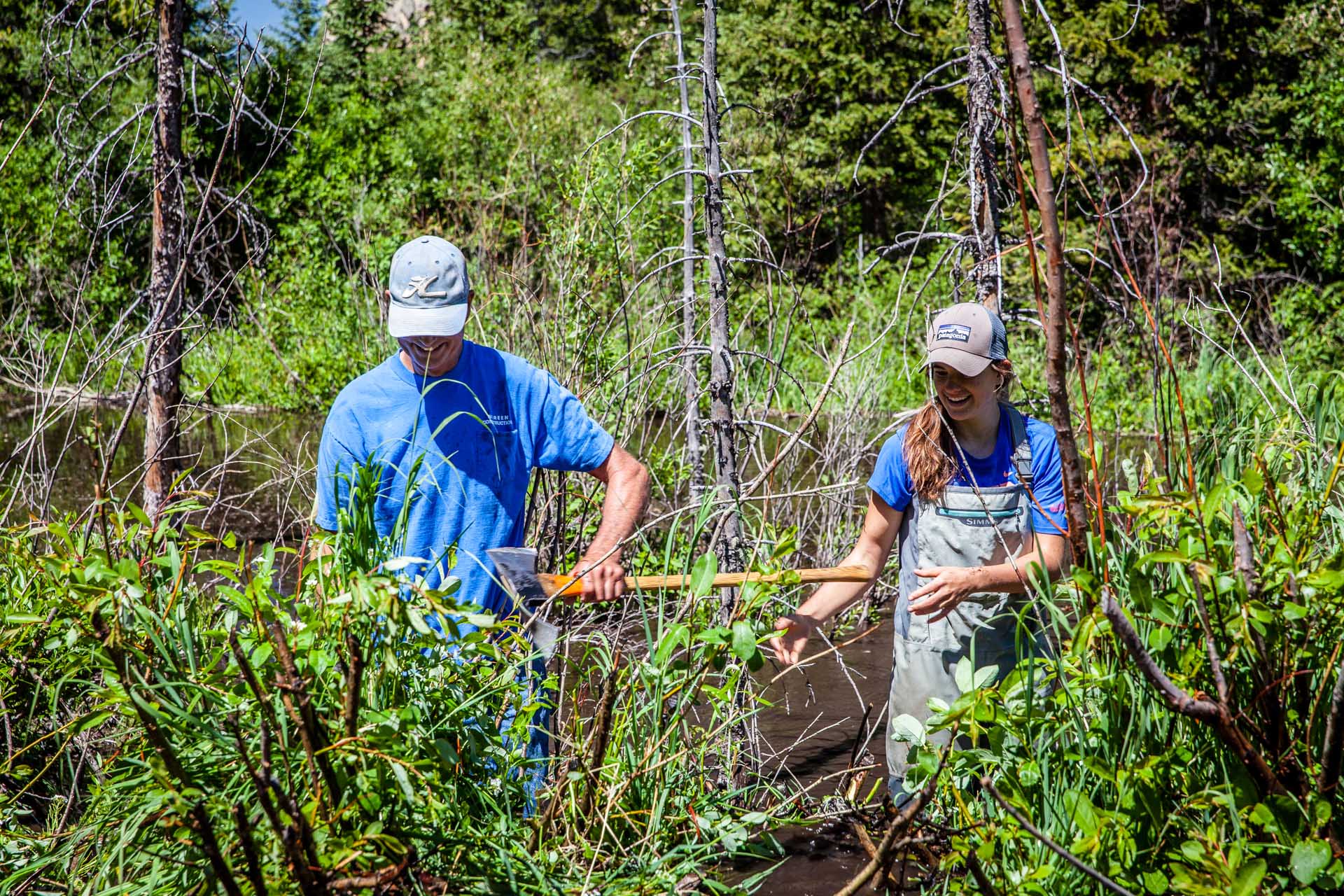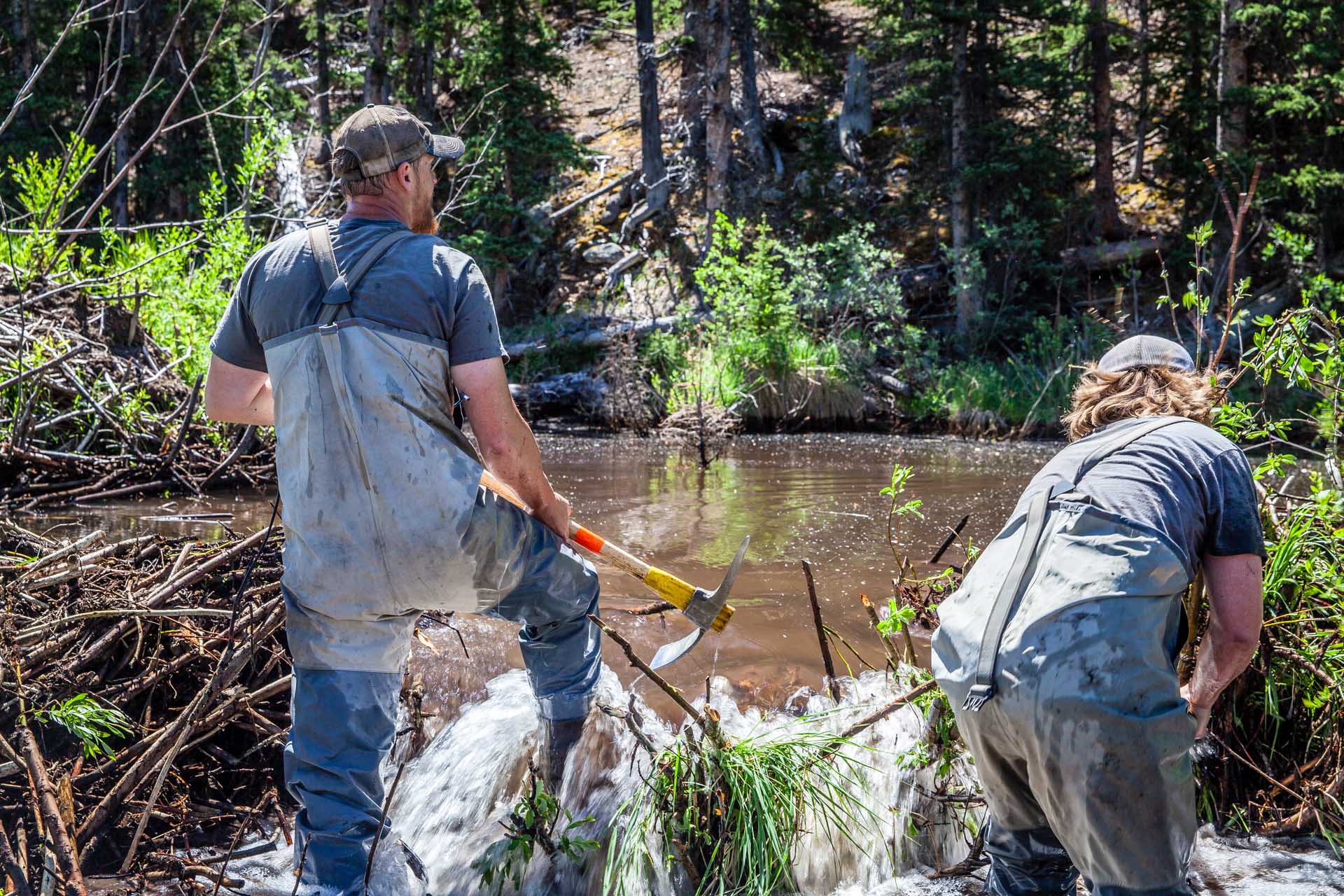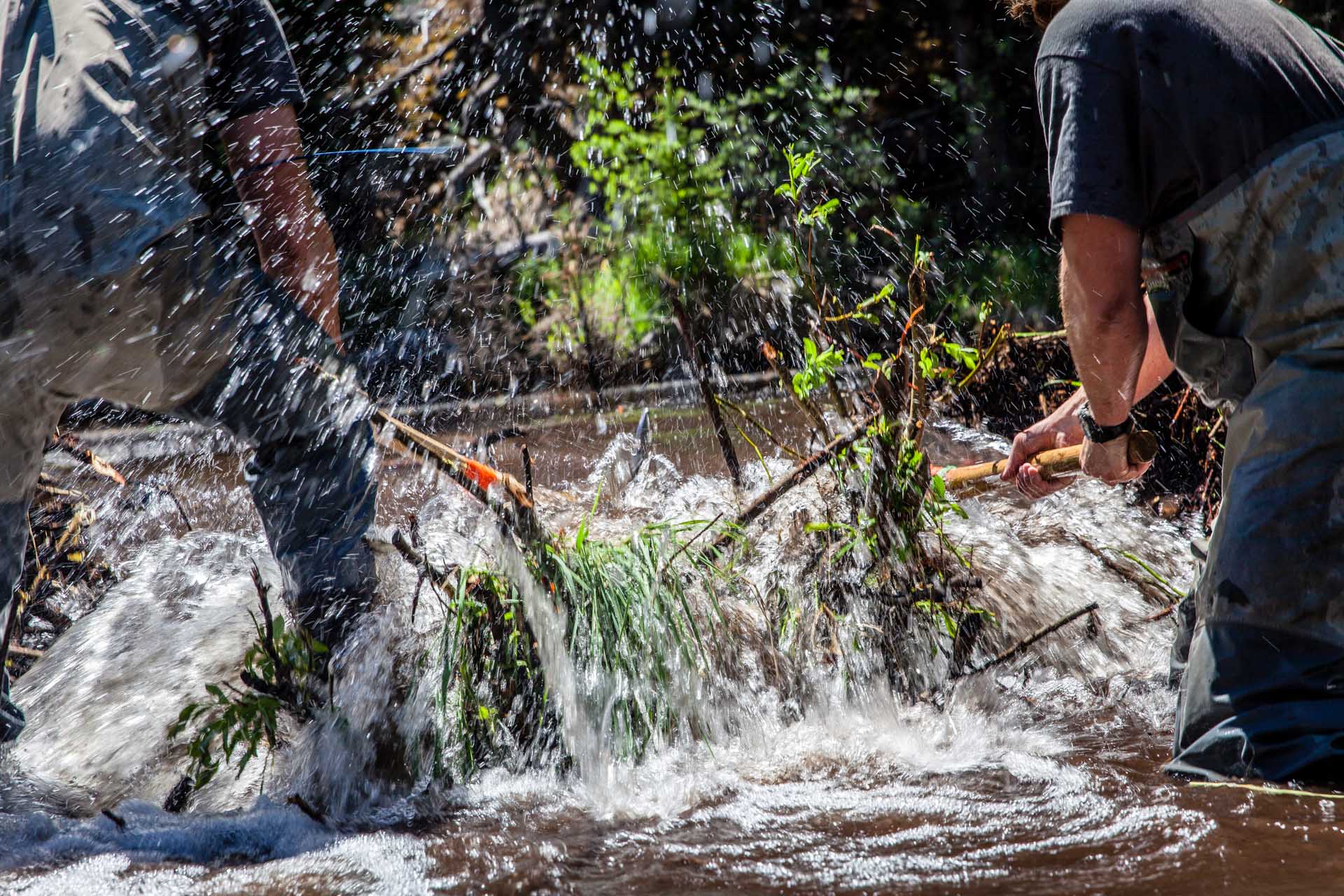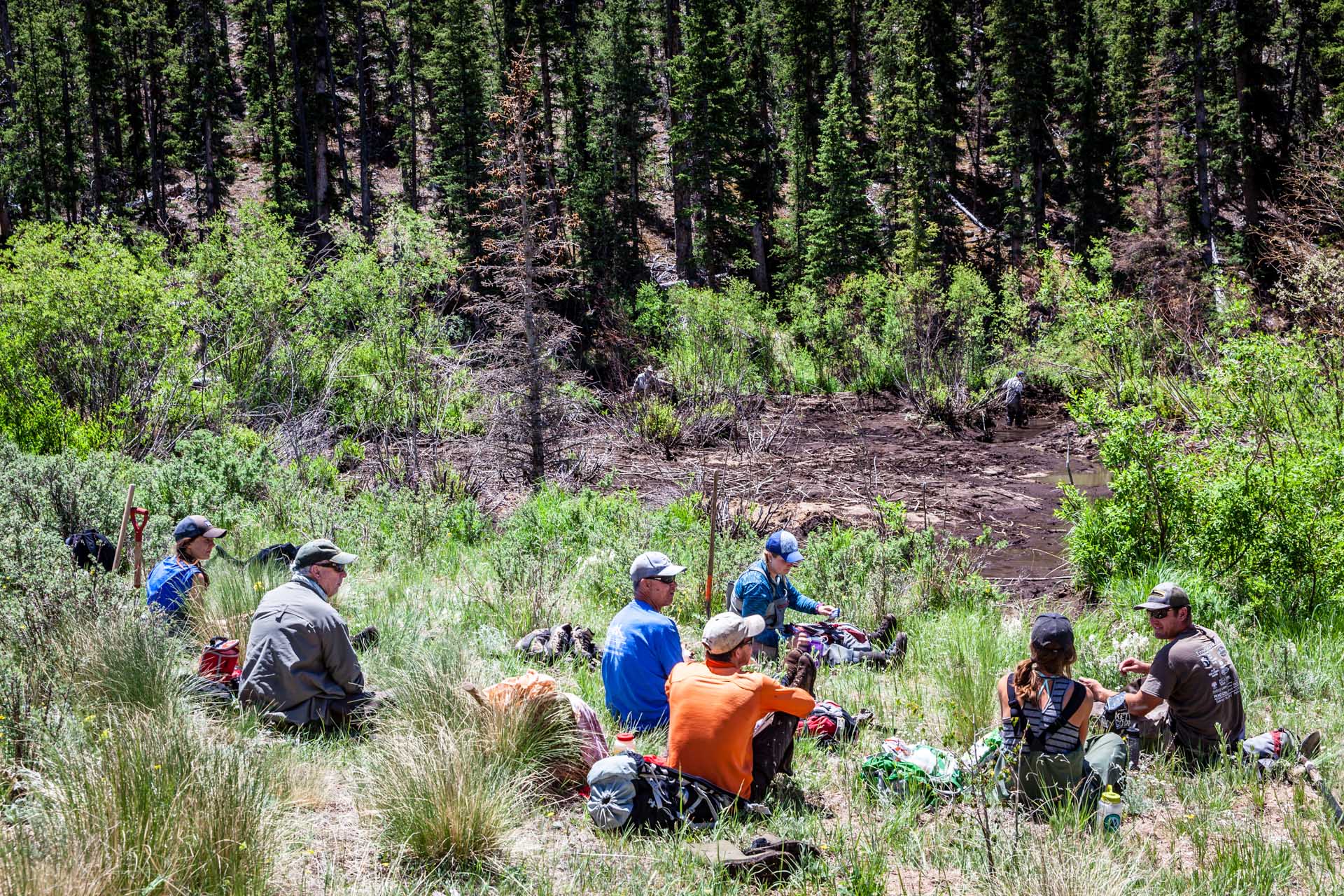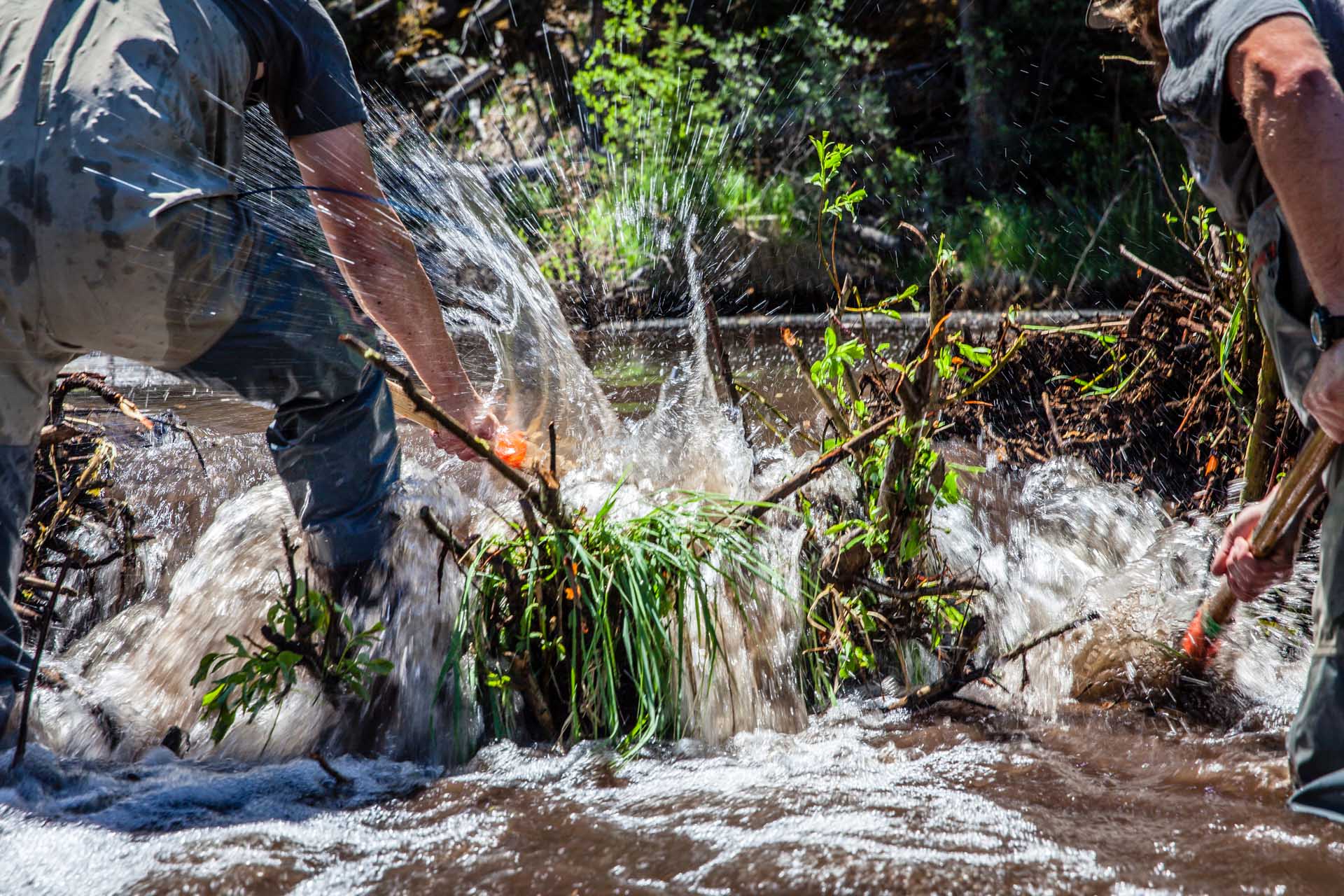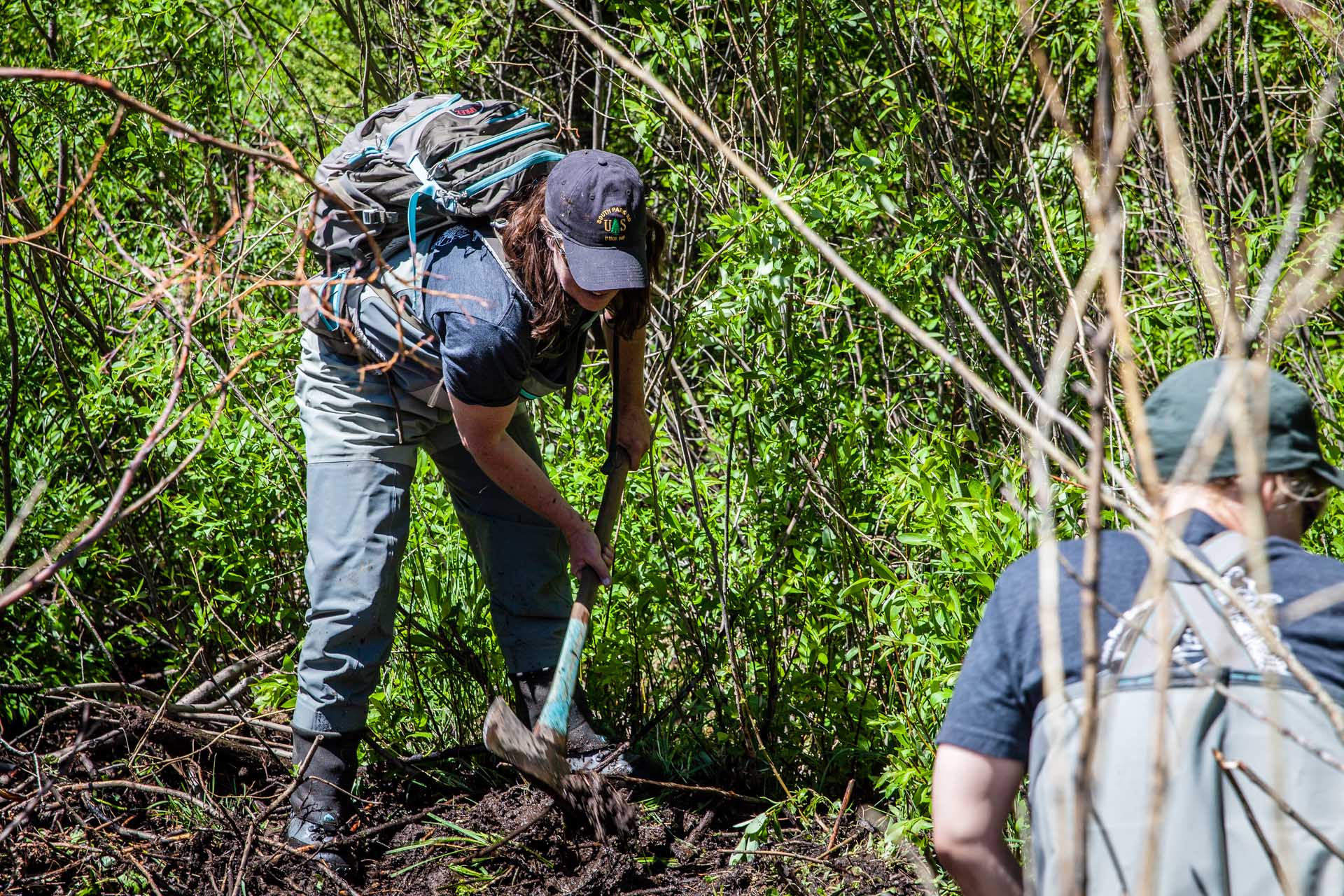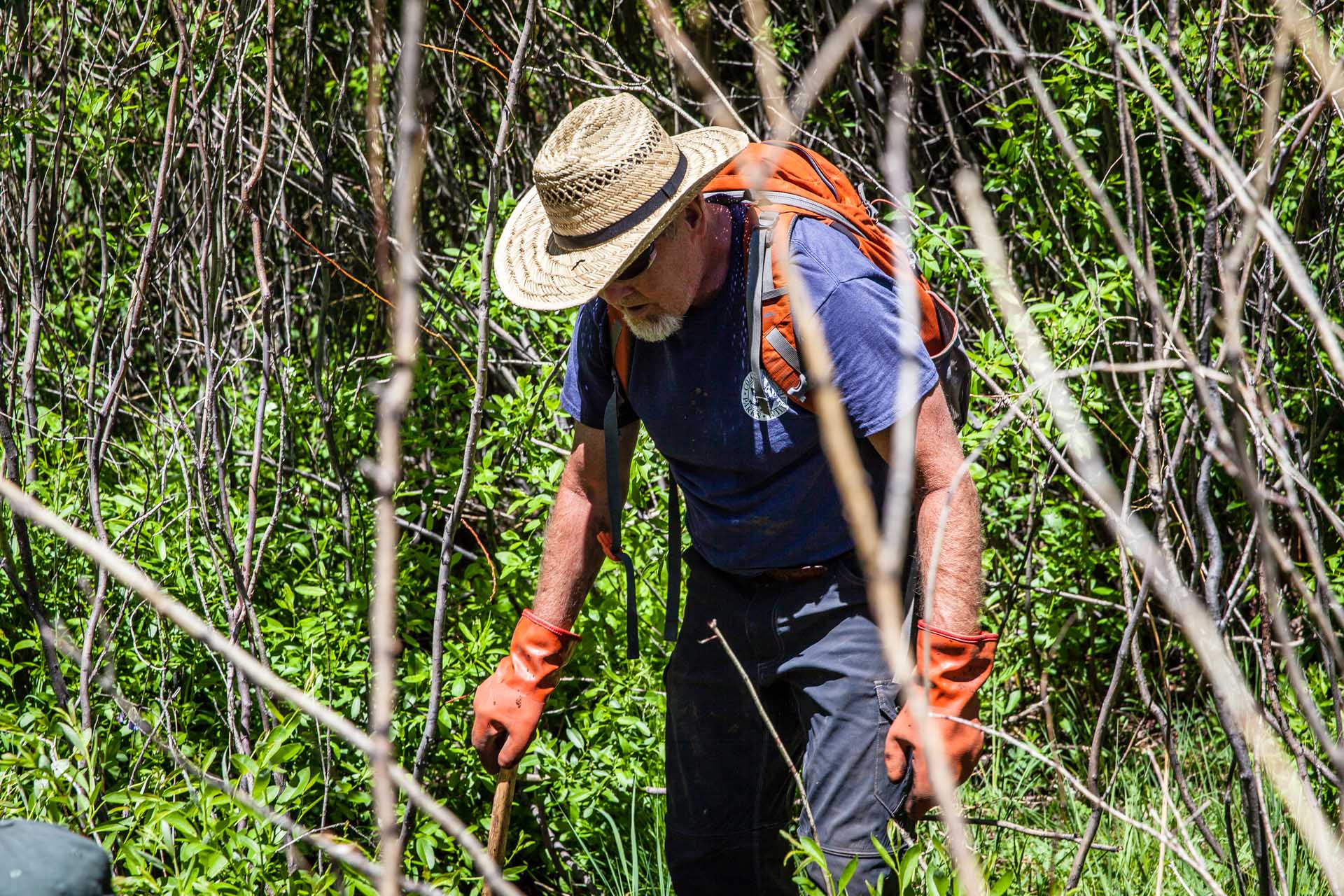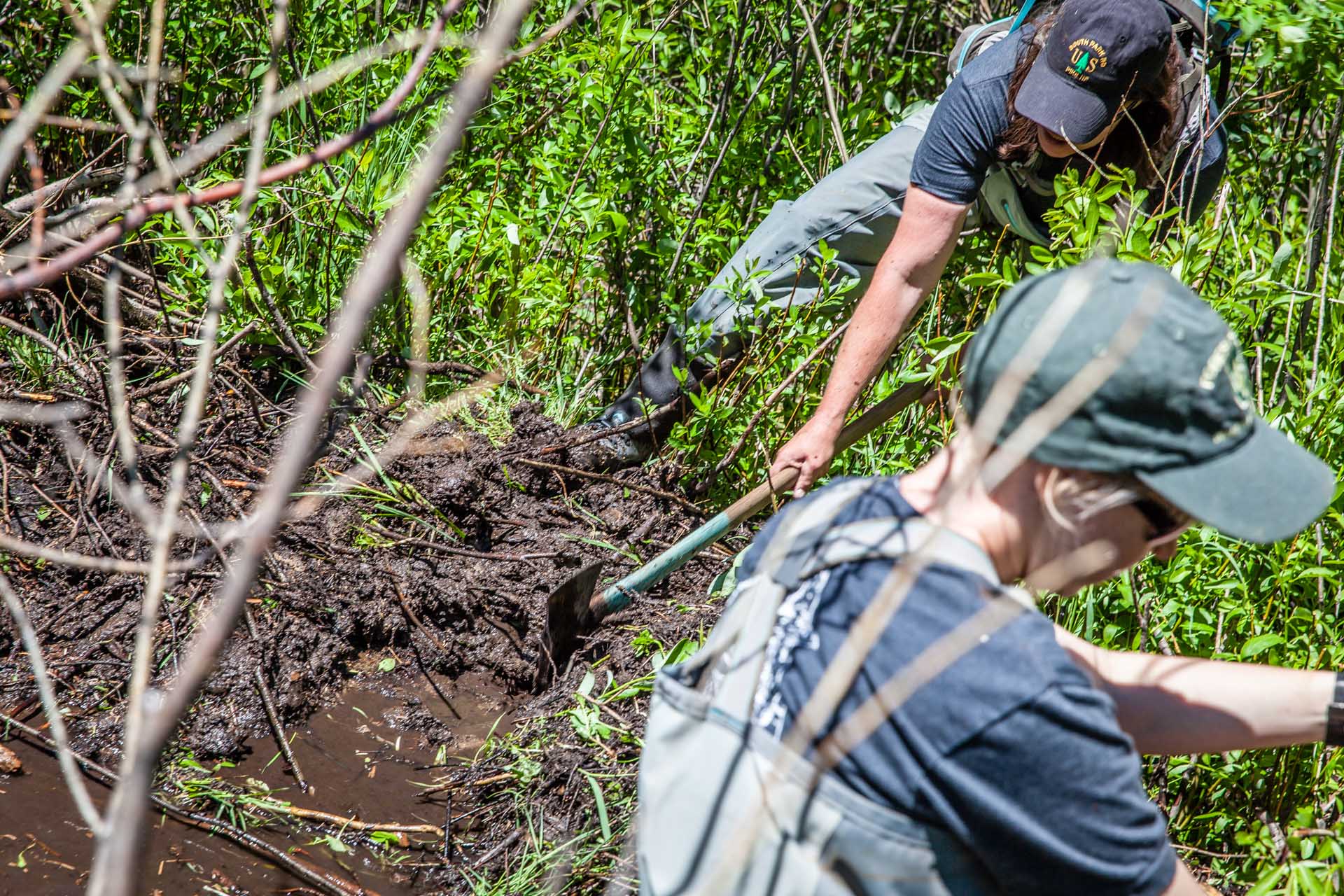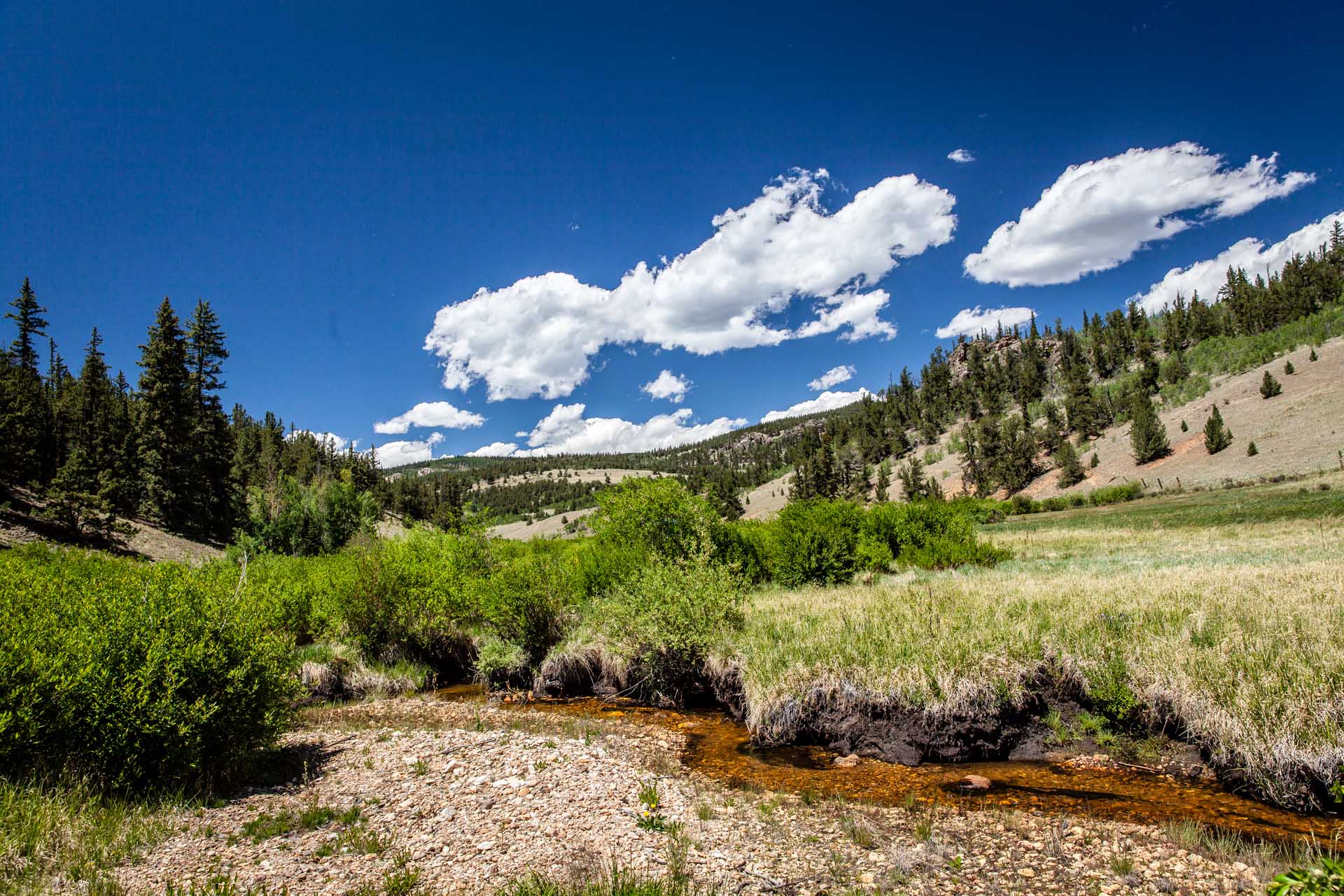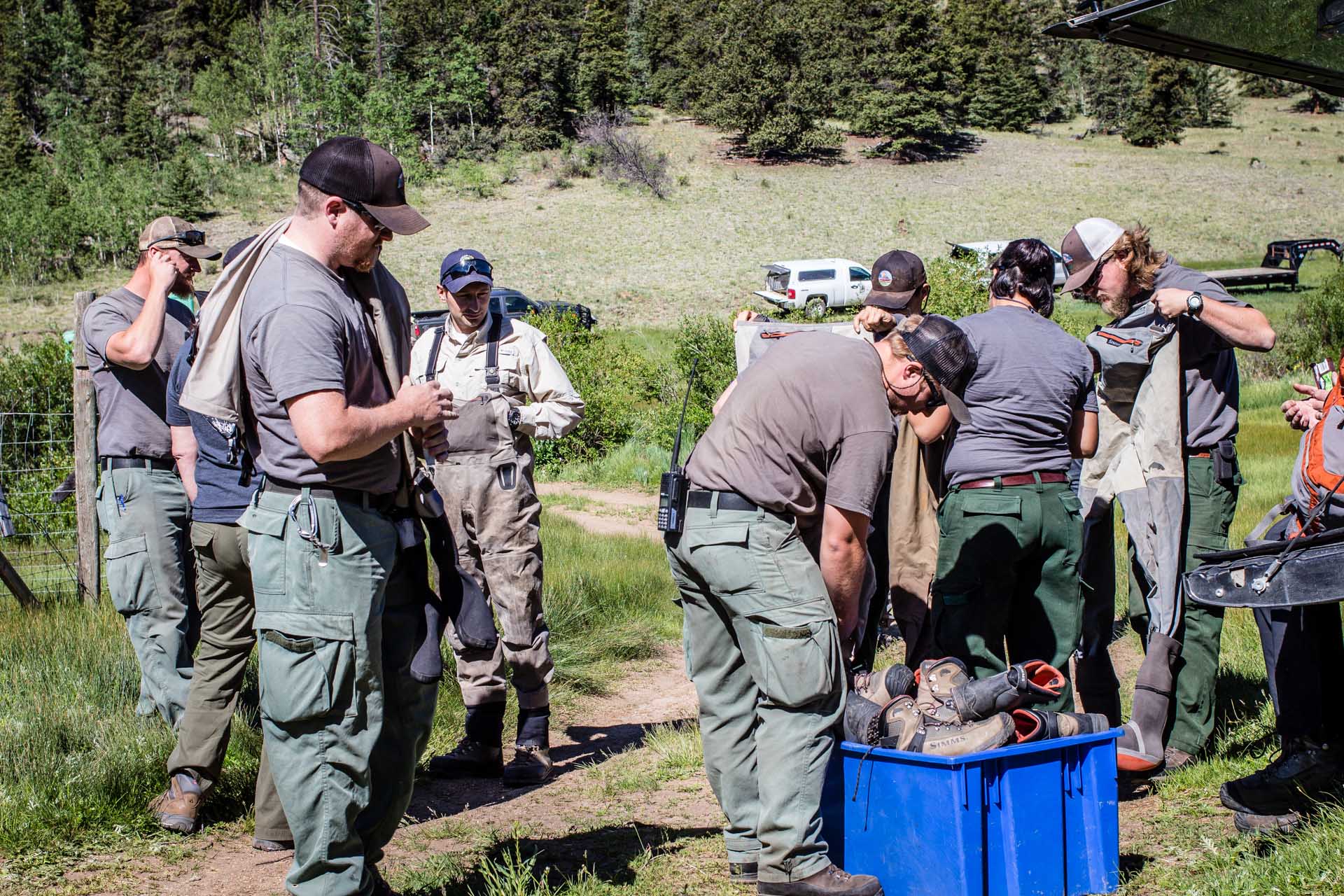Guy Turenne and Phil Wright trekking through deep snow to find a buried stream temperature probe on Fall Creek. Photo Credit: Phil Wright, 2019.
It was a beautiful November day in the high country, as Guy Turenne and Phil Wright climbed their way over drifts of fresh snow along Fall Creek – a tiny tributary in the heart of Colorado’s northern mountains.
This time, it was not fish that they were after, but a small temperature probe the size of a silver dollar, lying in wait at the bottom of the stream channel. Months earlier, Guy and Phil, along with dozens of other TU volunteers, worked with the U.S. Forest Service (USFS) and Colorado Parks and Wildlife (CPW) to place these loggers in different stream locations throughout the eastern half of the state.
Fish are heavily affected by temperature – especially trout. Changes in thermal regimes over the course of a few hours to a few months can trigger fish to spawn, eat, grow, and even breathe. We all saw stories in the hot, dry summer months of 2018, when low flows and extreme ambient air temperatures brought some rivers to over 79°F. At that point, dissolved oxygen becomes increasingly scarce and fish can die.
Stream temperatures also impact the normal day-to-day and cyclic activities of our trout. For example, Rainbow trout will spawn in the spring when water temperature begins to rise and reaches 45-56 degrees F (52°F is ideal). Conversely, Brown trout will spawn in the fall as water temperatures drop within 44-48°F. Each species of trout thrives at different conditions.
So, what does any of this have to do with two TU volunteers hiking through two feet of snow in the middle of Winter?
As it turns out – a lot! Just as water temperature affects the spawning cycle of Rainbows and Browns, thermal regimes play an important role in the development of Cutthroat trout – in this case, Greenbacks and Rio Grandes. These fish have evolved over thousands of years to eat, grow, and reproduce at specific thermal conditions in Colorado’s Rocky Mountains. As Trout Unlimited and native trout recovery partners continue to engage in projects that reclaim habitat and stock native fingerlings, we must ensure that the temperature regimes will support those fish long term.
But collecting that level of data across thousands of miles of small tributaries and remote drainages can pose a challenge to recovery partners. Fortunately, TU volunteers came to the rescue.
Chris Carroll, aquatic biologist with the U.S. Forest Service teaches TU volunteers how to attach stream temperature probes during April 2018 training.
With critical funding supplied by the Western Native Trout Initiative (WNTI) and the U.S. Forest Service, volunteers from several chapters helped to identify future habitat for the returning Greenback and Rio Grande Cutthroat. In the Spring of 2018, the project kicked off with a USFS-led volunteer training during the annual CTU Rendezvous in Keystone. From that point, chapter representatives recruited and trained their own local group of temperature probe deployment experts. Over the course of the summer, TU volunteers exceeded the original 30-site goal by setting and maintaining over 40 HOBO stream temperature loggers in several key drainages that have potential for recovery sites.
Evergreen TU volunteer, Mike Goldblatt, points to a recently-installed stream temperature probe in the Bear Creek drainage.
“We observed that the RMF membership and other members of the community seem to value stream monitoring efforts in general, are strongly supportive of such efforts, and are willing to volunteer,” explained Phil Wright, project coordinator for the Rocky Mountain Flycasters Chapter.
As the leaves changed and fell from the trees, TU volunteers went back into the field to collect the data – which was then transferred to biologists at USFS and CPW. From there, recovery partners will be able to show a better picture of which watersheds will make good candidates for future reintroduction.
Trout Unlimited volunteers continue to help advance native trout recovery throughout Colorado each year – even winning a regional volunteer service award from the U.S. Fish and Wildlife Service in 2018. Whether its notching beaver dams, backpacking in fingerlings, or tramping through two feet of powder, TU volunteers are committed and engaged in the recovery of our native trout. The stream temperature study is another chapter of this important saga – and one that will undoubtedly be the preface for the next wave of native cutthroat recovery sites. Who knows… maybe one of those streams will be in your backyard!
Colorado Trout Unlimited would like to recognize our valuable partners and chapters who have made this project possible:
Western Native Trout Initiative, the U.S. Forest Service, National Park Service, U.S. Fish and Wildlife Service, Colorado Parks and Wildlife, and Evergreen TU, West Denver TU, Rocky Mountain Flycasters TU, Alpine Anglers TU, Cutthroat Chapter TU, Pikes Peak TU, San Luis Valley TU, and Boulder Flycasters TU.
If you are interested to learn more about this project or volunteer, please visit Colorado TU’s Native Trout Page.










